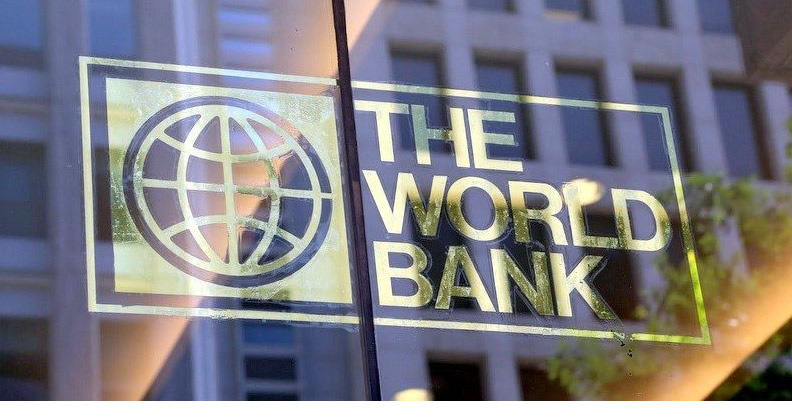The World Bank has projected that Nigeria’s economy will grow by 3.6 per cent in 2025, building on an estimated 3.4 per cent expansion in 2024, as ongoing macroeconomic reforms begin to stabilise the country’s business environment.
However, the Bank also reports that Nigeria is now home to 15 per cent of the world’s extremely poor population, according to its latest Africa’s Pulse report released in April 2025.
The Bank’s Spring 2025 forecast is more optimistic than that of the International Monetary Fund (IMF), which revised its 2025 growth estimate for Nigeria down to 3.0 per cent in its April update.
According to the World Bank, the country’s recovery is being driven by improved output in non-oil sectors such as financial services, telecommunications, and information technology, alongside a gradual rebound in oil production that is expected to align with Nigeria’s OPEC+ quota.
Looking further ahead, the Bank expects Nigeria’s economy to expand by 3.8 per cent by 2027, assuming current reforms are maintained.
“Economic growth is expected to remain moderate in Nigeria,” the report states. “It is projected to increase from 3.4 per cent in 2024 to 3.6 per cent in 2025, and reach 3.8 per cent by 2027.”
While services such as finance, ICT, and transport are expected to drive this modest recovery, the IMF remains cautious, warning that persistent structural challenges and subdued oil revenues will weigh on future growth. The Fund expects economic expansion to slow to 2.7 per cent in 2026.
On inflation, the World Bank anticipates a decline in headline inflation from 26.6 per cent in 2024 to 22.1 per cent in 2025, and down to 15.9 per cent by 2027. These figures follow the rebasing of the Consumer Price Index (CPI) by Nigeria’s National Bureau of Statistics in January 2025, updating the base year from 2009 to 2024.
As a result, inflation fell sharply from 34.8 per cent in December 2024 to 24.5 per cent in January 2025, before rising slightly to 24.2 per cent by March. However, the IMF holds a gloomier outlook, forecasting average inflation of 26.5 per cent in 2025 and a spike to 37.0 per cent in 2026 due to weak supply responses and exchange rate instability.
The World Bank identified the naira as one of Africa’s worst-performing currencies in 2024, losing over 40 per cent of its value following the government’s decision to unify exchange rates and adopt a market-driven foreign exchange regime. However, early 2025 has seen some stabilisation thanks to improved FX liquidity.
Externally, Nigeria’s current account position is forecast to remain strong. The World Bank projects a surplus rising from 9.2 per cent of GDP in 2024 to 9.4 per cent in 2026, supported by reduced imports, stronger remittance inflows, and higher oil exports.
The IMF, however, expects the surplus to shrink to 6.9 per cent in 2025 and further to 5.2 per cent in 2026, warning that extended periods of low oil prices could undermine Nigeria’s external balance. Fitch Ratings, meanwhile, predicts a more conservative surplus averaging 3.3 per cent over 2025–2026.
According to Central Bank of Nigeria data, the country posted a $6.83 billion balance of payments surplus in 2024—its first in three years—driven by a goods trade surplus of $13.17 billion.
Poverty concerns
Despite these economic projections, Nigeria faces a deepening poverty crisis. The World Bank notes that over 106 million Nigerians live on less than $2.15 per day, accounting for 15 per cent of the world’s extremely poor population.
The Africa’s Pulse report, unveiled at the IMF-World Bank Spring Meetings in Washington, D.C., highlights that sub-Saharan Africa is home to 80 per cent of the world’s 695 million people living in extreme poverty—with Nigeria alone responsible for approximately 19 per cent of the region’s total.
Other countries with high concentrations of poverty include the Democratic Republic of Congo (14 per cent), Ethiopia (9 per cent), and Sudan (6 per cent).
The Bank warns that unless structural reforms are implemented urgently, poverty in resource-rich but fragile economies such as Nigeria will continue to worsen. It projects that Nigeria’s poverty rate will increase by 3.6 percentage points between 2022 and 2027, despite temporary gains in sectors like ICT and financial services.
“Poverty in large, resource-rich fragile states—such as Nigeria and the Democratic Republic of Congo—is expected to rise by 3.6 percentage points from 2022 to 2027,” the report stated.
While several African countries with strong agriculture exports and more resilient institutions have made headway in poverty reduction, Nigeria continues to lag significantly.
The World Bank urged major improvements in service delivery, especially in countries with fast-growing populations. PwC estimates that 13 million additional Nigerians could fall into poverty in 2025 if the trend is not reversed.
The Nigerian Government has introduced various social intervention programmes, but implementation has often been slow and plagued by corruption.
The IMF echoed these concerns in a statement following its Article IV consultation mission to Nigeria (2–15 April 2025). It acknowledged recent reform efforts, such as removing fuel subsidies and halting monetary financing of the budget, but noted that the benefits have yet to reach most citizens.
“Gains have yet to benefit all Nigerians as poverty and food insecurity remain high,” the IMF said, urging that fiscal savings from subsidy removal be reinvested into essential public services and targeted relief for vulnerable populations.
IMF Managing Director Kristalina Georgieva also pointed out that falling oil prices were putting additional pressure on Nigeria’s budget, saying: “Oil producers like Nigeria are under budget pressure due to lower oil prices. Slowing global growth will affect everyone, and we have already downgraded Africa’s growth outlook.”



